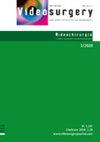股骨头血管内介入治疗
IF 1.9
4区 医学
Q2 SURGERY
引用次数: 0
摘要
外周动脉疾病(PAD)是世界性的重大健康挑战,也是预测死亡率和发病率的重要指标。随着外周动脉疾病治疗技术的不断进步,出现了许多治疗方案或血管内介入疗法(EVIs),如果药物治疗不能带来实质性改善,则可进行血管内血运重建。随机对照试验(RCT)显示,与传统的腔内血管成形术相比,动脉粥样硬化切除术、支架和药物球囊等各种血管内介入治疗具有一定的疗效;但是,由于缺乏不同血管内介入治疗之间的头对头比较研究,PAD 的标准治疗方法仍不明确。此外,不同临床试验在功能能力和生活质量(QoL)方面的结果也不尽相同,因此很难确定某一种 EVI 是否优于另一种 EVI。因此,最新的 PAD 临床试验应包括不同 EVI 之间的头对头比较,本综述旨在强调股骨干 EVI、支持每种干预措施的证据以及使用这些 EVI 的原因。本文章由计算机程序翻译,如有差异,请以英文原文为准。
Femoro-popliteal endovascular interventions
Peripheral artery disease (PAD) is a worldwide major health challenge, and it is a strong predictor of mortality and morbidity. The advances in PAD treatment have resulted in many therapeutic options or endovascular interventions (EVIs) for endovascular revascularization if drug therapy does not lead to substantial improvement. Randomized controlled trials (RCTs) have reported the efficacy of various EVIs such as atherectomy, stents, and medicated balloons over the traditional transluminal angioplasty; however, the standard treatment for PAD remains unclear due to the lack of head-to-head comparative studies between different EVIs. Additionally, the variable outcomes between clinical trials regarding the functional capacity and quality of life (QoL) make it difficult to ascertain the superiority of one particular EVI over another. Therefore, the latest PAD clinical trials should include head-to-head comparisons between different EVIs, and this review aimed to highlight the femoro-popliteal EVIs, evidence supporting each intervention and why those EVIs are used.
求助全文
通过发布文献求助,成功后即可免费获取论文全文。
去求助
来源期刊
CiteScore
2.80
自引率
23.50%
发文量
48
审稿时长
12 weeks
期刊介绍:
Videosurgery and other miniinvasive techniques serves as a forum for exchange of multidisciplinary experiences in fields such as: surgery, gynaecology, urology, gastroenterology, neurosurgery, ENT surgery, cardiac surgery, anaesthesiology and radiology, as well as other branches of medicine dealing with miniinvasive techniques.

 求助内容:
求助内容: 应助结果提醒方式:
应助结果提醒方式:


